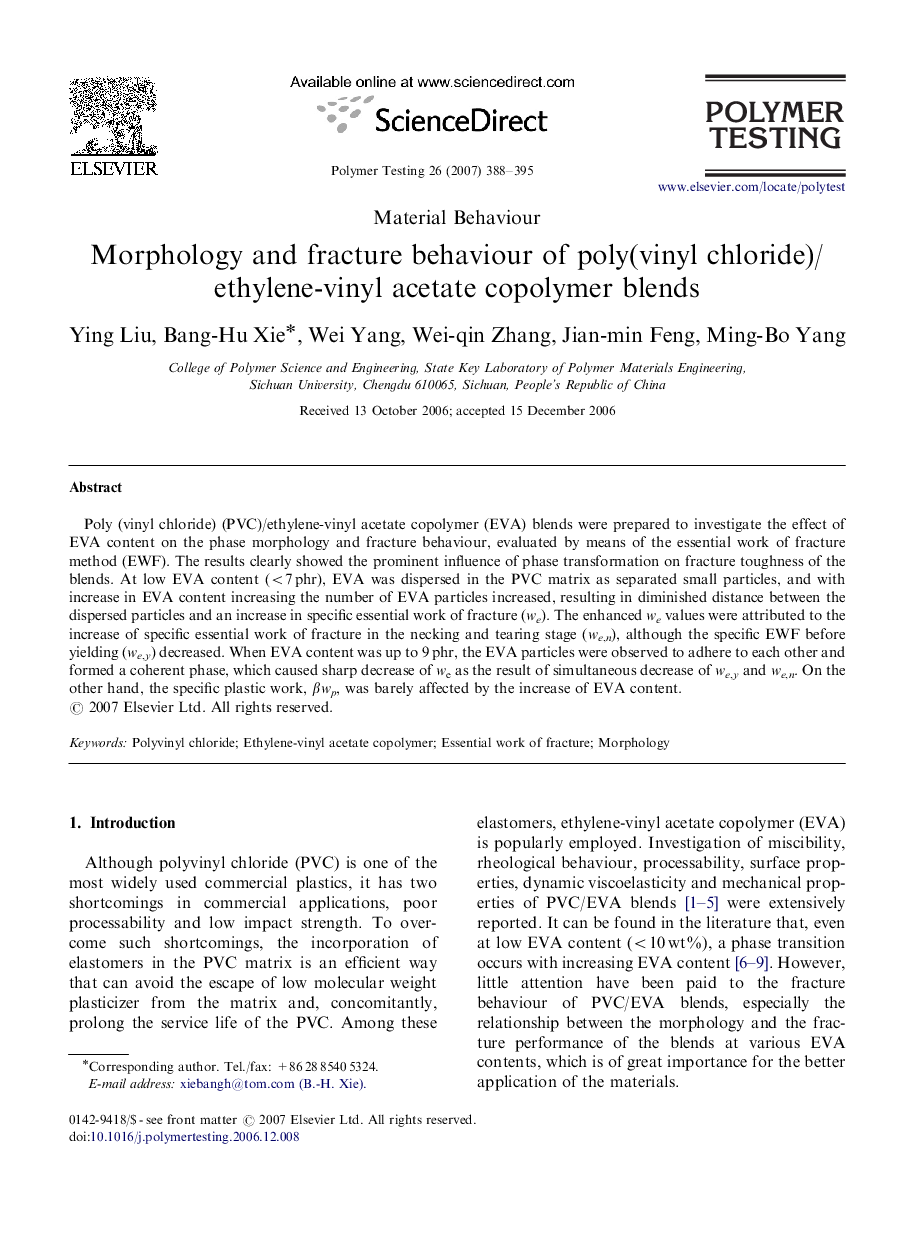| Article ID | Journal | Published Year | Pages | File Type |
|---|---|---|---|---|
| 5207778 | Polymer Testing | 2007 | 8 Pages |
Abstract
Poly (vinyl chloride) (PVC)/ethylene-vinyl acetate copolymer (EVA) blends were prepared to investigate the effect of EVA content on the phase morphology and fracture behaviour, evaluated by means of the essential work of fracture method (EWF). The results clearly showed the prominent influence of phase transformation on fracture toughness of the blends. At low EVA content (<7 phr), EVA was dispersed in the PVC matrix as separated small particles, and with increase in EVA content increasing the number of EVA particles increased, resulting in diminished distance between the dispersed particles and an increase in specific essential work of fracture (we). The enhanced we values were attributed to the increase of specific essential work of fracture in the necking and tearing stage (we,n), although the specific EWF before yielding (we,y) decreased. When EVA content was up to 9 phr, the EVA particles were observed to adhere to each other and formed a coherent phase, which caused sharp decrease of we as the result of simultaneous decrease of we,y and we,n. On the other hand, the specific plastic work, βwp, was barely affected by the increase of EVA content.
Related Topics
Physical Sciences and Engineering
Chemistry
Organic Chemistry
Authors
Ying Liu, Bang-Hu Xie, Wei Yang, Wei-qin Zhang, Jian-min Feng, Ming-Bo Yang,
